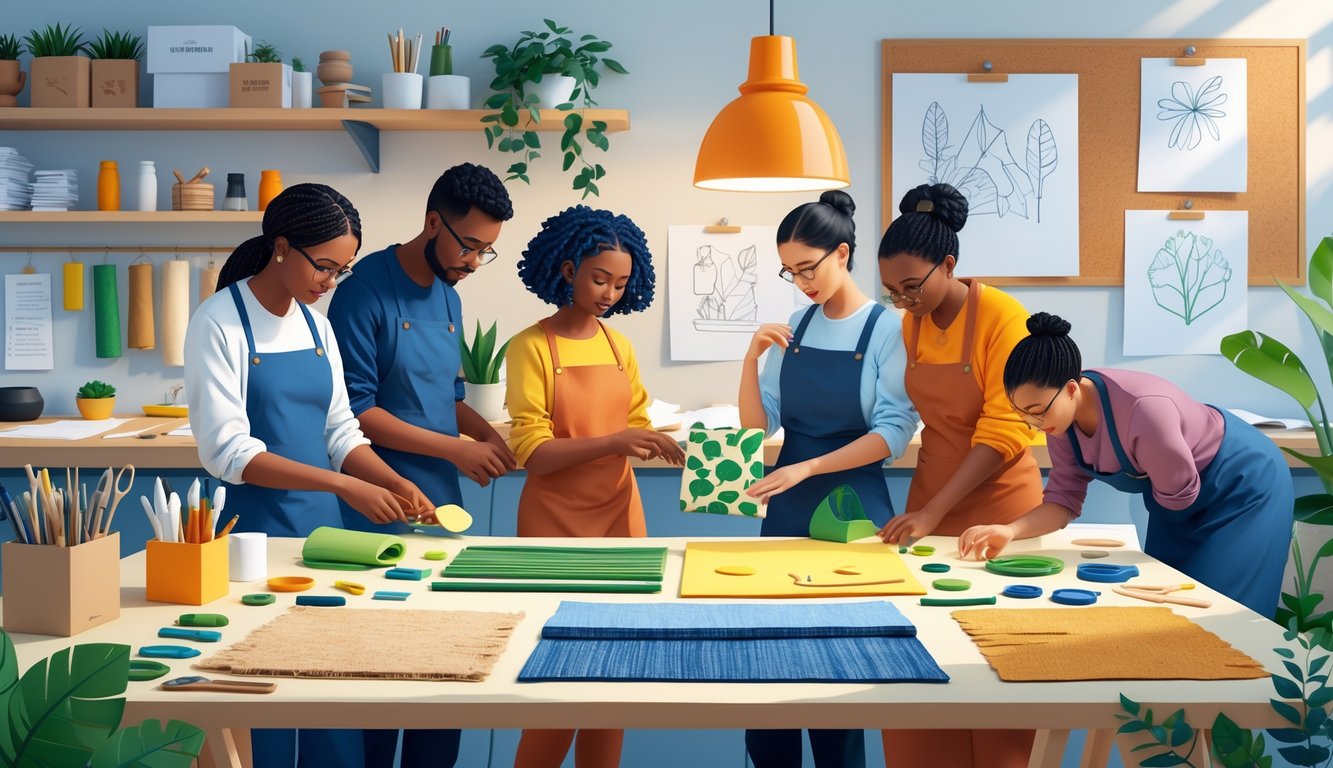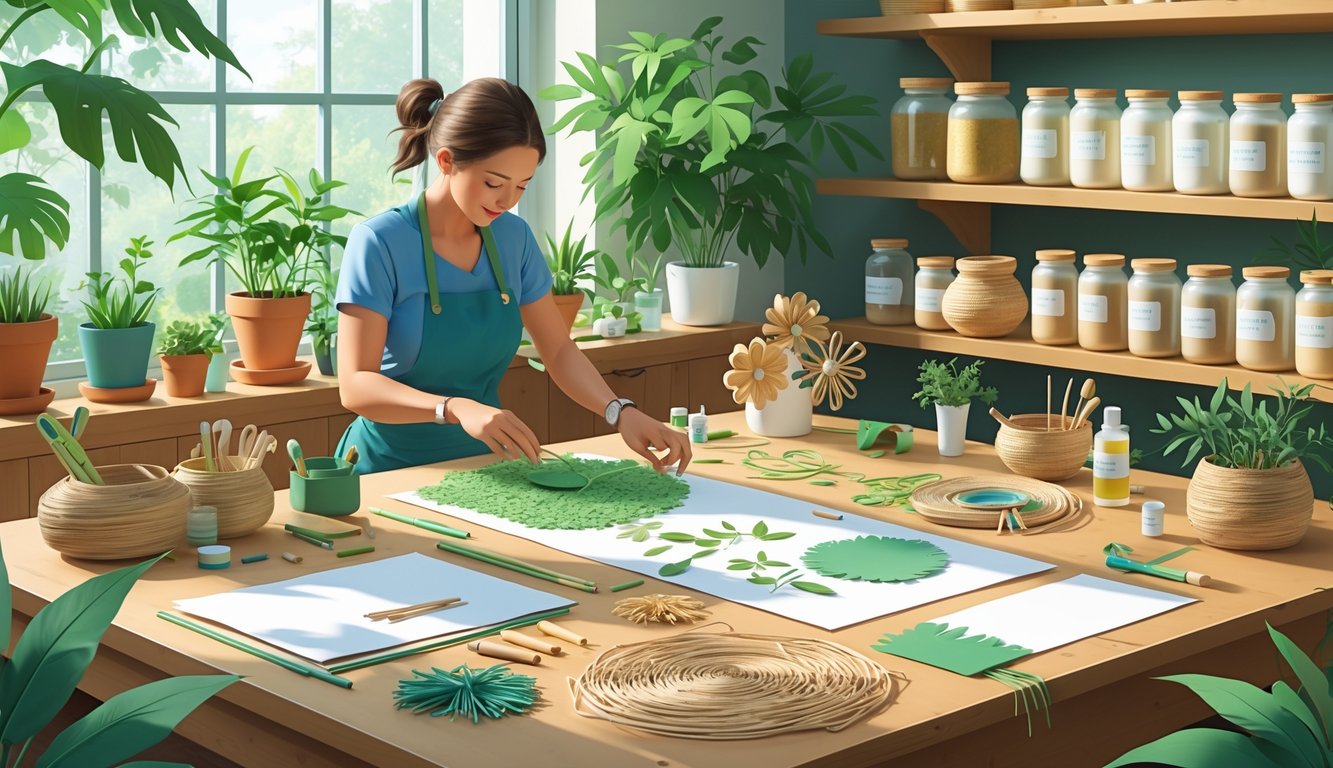
Ran out of linen last night and just stood there, staring at the pile of recycled poly-felt I keep swearing I’ll use. I mean, who hasn’t collected these “innovative” alternatives, only to forget them exist because—let’s face it—most of them sucked? Supposedly, material alternatives are finally worth a try (so they say), and even Craft Council’s 2020 report pointed out that non-traditional supplies are actually gaining ground. I tried that new 72-inch-wide, 1.6mm acrylic felt roll—no, it’s not a polyester rug, but for ornaments? Doesn’t fray, doesn’t warp, and I’m a little mad I waited this long. Someone in my online group (her username has “glitter” in it, so, grain of salt) claimed she cut project costs by 30% with these swaps. Thought she was full of it. Turns out, she wasn’t.
Here’s the thing—everyone’s still suspicious. Every survey: “Are recycled materials actually sturdy, or will my project collapse if I sneeze?” I get it. But then, some scientific review said people are way more open to alternatives if the quality holds up. I mean, I once used recycled sheet paper for botanical prints at a Christmas market and it outperformed my usual cotton rag. My local supplier told me his alternative supply orders jumped 40% since January. Is that a trend? Or just a fluke? And if you want data, independent studies back it up, apparently. Whatever, I’m still skeptical.
But the whiplash—wow. My aunt mocked anything that wasn’t from the big-box fabric wall last year. Now she’s selling “eco-mesh” necklaces and acting like she invented the idea. Feels like there’s this weird gap between all those stiff, scratchy substitutes we suffered through and the new stuff that just showed up out of nowhere. Did anyone get a memo? Nope. So, yeah, welcome to the era of material alternatives that finally don’t suck. Maybe. Try at your own risk.
Why Crafters Are Seeking Material Alternatives
If everyone around me is switching to biodegradable twine and I’m still hoarding polyester felt, am I missing something—or is this just another “green” bubble that’ll burst by next year? I mean, I don’t buy every trending hashtag, but the reasons for all this eco-hype aren’t as flaky as I thought.
Environmental Impact and Sustainability
Every time I see my pile of fabric scraps (half synthetic, let’s be honest), that stat from last week’s guild meetup pops up in my head: microplastics from textiles supposedly make up over a third of global ocean plastics (United Nations Environment Programme, 2022). My little embroidery hoop isn’t single-handedly killing the planet, but multiply it by millions and, yeah, the polyester doesn’t just disappear.
Organic cotton? Costs more, shrinks if I just look at it, but if it’s GOTS certified, at least I’m not contributing to chemical runoff. And don’t even get me started on bamboo fiber—why does every “sustainable” spool come shrink-wrapped in double the plastic? Drives me nuts. I still buy it, though.
Nobody’s pausing in line to calculate their carbon footprint, but seeing more sustainable material options (like recycled paper yarns) makes me wonder, “If not now, when?” Tried swapping acrylic paint for a linseed-oil version once—almost passed out from the fumes. So, eco-friendly sometimes means “open a window or die.” I guess the adult move is to pick the least-worst option and move on, even if it feels like a drop in the ocean.
Growing Popularity of Eco-Friendly Products
It’s wild—people at craft fairs now ask, “Is this recycled?” like I’m supposed to have a certificate for my yarn. When Joann started closing stores, my stitch group lost it. Suddenly all these tiny indie shops—like the one with upcycled denim—got mobbed. My social feeds are clogged with #slowfashion and #zerowastecraft. It’s exhausting.
Two years ago, finding paper made from coffee cups felt like winning the lottery. Now, every other booth at conventions has upcycled fabric, sugarcane twine, or naturally dyed thread. Manufacturers slap “biodegradable” on everything—hot glue sticks, “compostable” glitter. Who’s composting glitter? Not me. But apparently, it sells.
Met a fabric designer at a pop-up who said, “If I don’t adapt, my customers stop showing up.” So, pressure from both sides. People expect eco-options, and if I don’t offer them, my table stays empty. The DIY crowd acts suspicious, but the numbers don’t lie: eco-friendly crafting supplies grew 12% year-over-year (Craft Yarn Council 2024). Go figure.
Project Requirements and Personal Values
Wouldn’t life be easier if every project just needed plain muslin? But no, someone wants “botanically dyed, no animal fibers, fair trade only.” Not making this up—I spent four hours hunting for vegan glue that didn’t cost more than my whole commission. Sometimes my “values” just feel like a headache.
When a project requires recycled, plastic-free, or cruelty-free materials, I turn into a detective. Tracking certifications—FSC wood, OEKO-TEX labels, which twines actually biodegrade—it’s a full-time job. Sometimes I just can’t bring myself to use materials destined for a landfill, even if no one else cares. It’s pride, or guilt, or both. But I have to admit, there’s a weird relief when my knits or wall hangings line up with my ethics—even if my friends think I’ve lost it.
Getting Started With Eco-Friendly Crafting

Honestly, I’ve lost count of how many half-used glue sticks I’ve rediscovered in storage bins. The real headache? Figuring out which eco-friendly materials actually work for my random project whims—and whether they’re even in stock when inspiration hits. Everything’s either way too niche or buried under a dozen “green” labels. Is it just me?
Assessing Your Material Needs
Every time I try to “go green,” I get tripped up by what’s already in my junk drawer. Those cardboard tubes and old fabric scraps from last year’s failed scarf project? Haunt me every time I open the closet. That pledge to use only recycled stuff? Lasted about two weeks. A pro crafter friend told me to track my material waste for a month. Did it—turns out, I use about 32% synthetic ribbons, 20% acrylic paint, and a mess of plastic beads (never the right color). Repurposing old fabrics or containers saved me more money than energy, honestly. Eco blogs claim tracking prevents overbuying, but do I ever finish those lists? Nope. The real trick is figuring out what you’ll actually use, not what looks cute on Pinterest.
Ease of Use and Accessibility
People rave about soy wax, but try splitting a 10lb block with a butter knife and tell me it’s “easy.” I’ve ruined more kitchen tools making DIY wax wraps than I want to admit. Those bio-based resins or water-based acrylics sound nice—until the weird texture messes up your project halfway. Amazon’s full of “eco-friendly” supplies, but most reviews are about usability: beeswax sheets, recycled sketchbooks, or “plant-based” glues that dry weird and chalky. My local group cares less about labels, more about whether the stuff feels close to “normal,” works with their tools, and doesn’t turn cleanup into a nightmare. Compostable glitter? Try getting that out of carpet. Good luck.
Where to Buy Sustainable Materials
Every third store trip, I find myself staring at a wall of plastic-wrapped “eco kits” or overpriced “organic” yarn that feels like sandpaper. I’ve had better luck raiding thrift stores for recycled paper and fabric scraps. Pinterest (weirdly) suggested asking my barista for paper sleeves, and now I have a drawer full. If you’re not into scavenging, Honestly Modern has a guide for buying eco-friendly craft materials, but local art shops barely stock this stuff and even Amazon’s faster. eBay, Etsy, and resell apps are lifesavers for unique, upcycled finds. Pro tip: join local Facebook craft swap groups. A retired teacher once gave me a grocery bag of press-dried flowers—way better than anything I’ve bought in a store.



